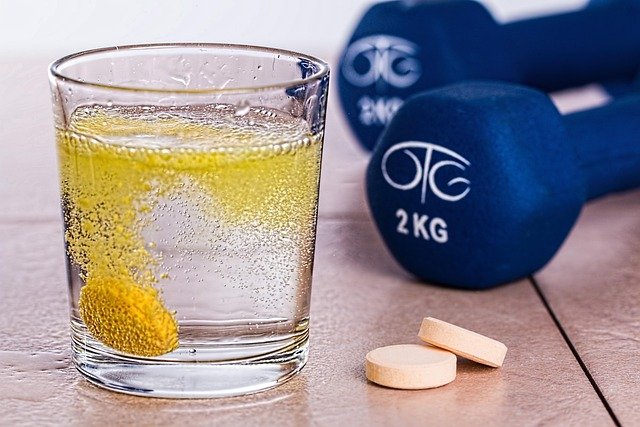A Guide to Managing Bladder Discomfort Naturally and Gently
Living with bladder discomfort can significantly impact your quality of life, affecting everything from sleep patterns to social activities. Whether you experience frequent urges to urinate, sudden urges that are difficult to control, or general discomfort in the bladder region, there are natural approaches that can help manage these symptoms. This comprehensive guide explores gentle, non-pharmaceutical strategies for managing overactive bladder and related bladder discomfort, focusing on lifestyle modifications and natural remedies that can provide relief.

Recognize Common Causes of Bladder Discomfort
Understanding what triggers bladder discomfort is the first step toward effective management. Overactive bladder (OAB) affects approximately 33 million Americans and can stem from multiple causes. Common culprits include urinary tract infections (UTIs), which irritate the bladder lining and trigger urgency. Hormonal fluctuations, particularly during menopause when estrogen levels decline, can weaken the pelvic floor muscles and bladder tissues. Certain neurological conditions like multiple sclerosis or Parkinson’s disease may interfere with nerve signals between the brain and bladder. Additionally, excessive caffeine and alcohol consumption, artificial sweeteners, and highly acidic foods can irritate the bladder, exacerbating symptoms.
Age-related changes in bladder function also play a significant role, as bladder capacity naturally decreases and involuntary contractions may increase with age. Identifying which factors contribute to your specific symptoms allows for more targeted management approaches.
Adopt Gentle Dietary Changes
What you consume has a direct impact on bladder health and function. Creating a bladder-friendly diet involves eliminating or reducing common irritants while incorporating foods that support overall urinary health. Consider keeping a food diary to identify personal triggers, as they can vary significantly between individuals.
Foods and beverages that commonly irritate the bladder include caffeinated drinks (coffee, tea, energy drinks), alcoholic beverages, carbonated drinks, artificial sweeteners (especially aspartame), spicy foods, citrus fruits, tomato products, and chocolate. Instead, focus on bladder-friendly alternatives like pears, watermelon, bananas, green beans, squash, and whole grains. Introducing probiotics through yogurt or supplements may help maintain healthy bacteria balance in the urinary tract. Making these dietary adjustments gradually rather than all at once makes the transition more sustainable and helps isolate which specific changes provide the most relief.
Stay Hydrated with Water
While it might seem counterintuitive when experiencing urinary frequency, proper hydration is essential for bladder health. Adequate water intake helps dilute urine, reducing its concentration and potential irritation to the bladder lining. Concentrated urine is more acidic and can aggravate bladder discomfort, while proper hydration helps flush bacteria and toxins from the urinary system.
The key is maintaining consistent hydration throughout the day rather than consuming large quantities at once. Aim for approximately 6-8 glasses (1.5-2 liters) of water daily, adjusting based on activity level, climate, and individual needs. Consider timing your fluid intake strategically—drinking more during the early part of the day and reducing intake in the evening hours to minimize nighttime urination. Monitoring urine color can serve as a simple hydration gauge; pale yellow indicates good hydration, while dark yellow suggests more water is needed.
Use Natural Remedies and Supplements
Several plant-based supplements and natural remedies show promise in managing bladder discomfort. Pumpkin seed extract contains compounds that may support bladder function and reduce urinary frequency. D-mannose, a type of sugar that prevents bacteria from adhering to urinary tract walls, can help prevent recurrent UTIs that contribute to bladder irritation. Some studies suggest cranberry supplements (not sugary cranberry juice) may help prevent UTIs in certain populations.
Herbal options include corn silk tea, which has been traditionally used as a gentle diuretic with soothing properties for the urinary tract. Marshmallow root contains mucilage that forms a protective layer on irritated tissues, potentially calming bladder inflammation. Horsetail herb contains silicon that may strengthen connective tissues in the urinary system. Magnesium glycinate supplements might help reduce bladder muscle spasms and improve overall muscle function, including in the pelvic region.
Practice Pelvic Floor Exercises
Strengthening the pelvic floor muscles that support the bladder can significantly improve control over urination and reduce symptoms of urgency and frequency. Kegel exercises, when performed correctly and consistently, can strengthen these muscles over time. To identify the correct muscles, try stopping your urine mid-stream (though this technique should only be used for identification purposes, not as a regular exercise).
A basic Kegel routine involves tightening these muscles for 5 seconds, then relaxing for 5 seconds, repeating 10-15 times per session and aiming for 3 sessions daily. As strength improves, gradually increase the duration of contractions. Beyond basic Kegels, techniques like quick flicks (rapid contractions and releases) can help improve the pelvic floor’s reaction to sudden pressure or urgency. Consider working with a physical therapist who specializes in pelvic floor health for personalized guidance, especially if you experience pain or difficulty with these exercises.
Implement Bladder Training Techniques
Bladder training involves gradually increasing the time between bathroom visits to help retrain the bladder to hold more urine comfortably. Start by creating a urination schedule, noting when you typically feel the urge. Initially, try delaying urination by just 5-10 minutes when the urge arises, using relaxation techniques like deep breathing or distraction to manage urgency. Over weeks, gradually extend the time between bathroom visits.
The goal is to work toward a normal pattern of urinating every 3-4 hours during the day. Keeping a bladder diary during this process helps track progress and identify patterns. Double voiding—urinating, waiting a few moments, then trying again—can help ensure complete bladder emptying. Consistent practice with these techniques can significantly improve bladder capacity and reduce frequency over time.
This article is for informational purposes only and should not be considered medical advice. Please consult a qualified healthcare professional for personalized guidance and treatment.




